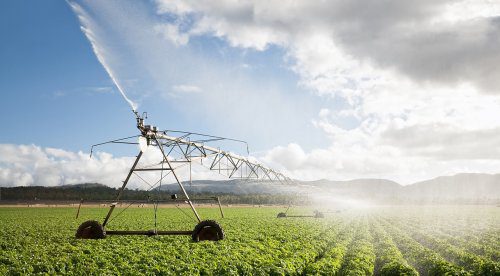How Risk Assessments Can Make a City More Resilient to Weather Extremes

Is your city at risk? Identifying where cities have problems and determining how much is at risk is the first step to becoming a strong, resilient city.
In states like California, water shortage is hardly a temporary problem, but there are very serious consequences that put local and state economies at risk. For example, when farmers are unable to water their crops. CH2M experts, Principal Technologist Forrest Gist and Global Technology Lead Armin Munévar weigh in on how the implementation of risk assessments can make your city more resilient against extreme weather.
Balancing water supply and demand across regions and states—while addressing current and future vulnerabilities to extreme conditions such as drought—is essential to safeguarding the wellbeing of our communities. Cities and farms receiving water from California’s Sacramento-San Joaquin River Basins and the Colorado River Basin are particularly vulnerable to drought. Future risks to these water supplies could impact millions.
We’re currently working with the U.S. Bureau of Reclamation, state water resource departments and municipal and agricultural water providers to assess climate-related water supply and demand risks for these two river basins over the next 50 years. This work has yielded promising strategies for resolving regional imbalances and demonstrates how an analytical approach to risk assessment can help decision-makers better understand and proactively overcome future resilience challenges for a more livable, sustainable tomorrow.
What does it mean to become drought resilient?
Becoming drought resilient means several things:
- Drought impacts and consequences are understood, measured and quantified.
- Drought likelihood and occurrences are recorded over time, in some cases using paleoclimate records, to quantify regional risks.
- Specific, detailed adaptation measures to reduce impacts and risks are implemented, lessons learned from past droughts are studied, and existing measures are regularly assessed to improve planning for the future.
- A comprehensive set of state-required drought management and recovery plans are in place to minimize impacts and decrease recovery time.
Envisioning the future helps identify options to reduce future risks
The Colorado River supplies water to agricultural, municipal and industrial users in seven U.S. states, Native American tribes along the river, and Mexico. Extended droughts, reduced snowpack and declining runoff demonstrate the variability of source water volumes and the region’s vulnerability to water supply changes. Similarly, the Central Valley’s Sacramento and San Joaquin Rivers provide water supply to millions of Californians. Impacts from California’s continuing drought—one of the most severe in the past 100 years—is measured in billions of dollars.
The basin studies for these river basins included a comprehensive vulnerability-risk assessment. Central to this approach was developing a range of future scenarios to explore the regions’ primary future uncertainties: climate, socioeconomics, technology and policy. These scenarios enabled the team to assess the present reliability of each basin against the future using advanced system modeling that estimated future water supply and quality, as well as recreational and ecological resource risks. Modeling results determined these basins could not fully meet future water delivery needs due to substantial increases in demand and a declining, more variable water supply. To address this growing supply-and-demand gap, CH2M evaluated hundreds of future water management options, from demand management to supply augmentation and created an optimized set of options for addressing more extreme drought conditions.
Benefits of the vulnerability-risk assessment approach
Structured decision-making through comprehensive risk assessments has provided numerous benefits to the Sacramento-San Joaquin River Basins and the Colorado River Basin:
- Increased awareness and understanding of climate- and drought-related risks.
- Improved policies for managing river basins and water delivery.
- Accelerated local water conservation and reuse program implementation.
- More diversified drought preparedness and recovery water management options.
A version of this article also appeared on Smart Cities Council.


